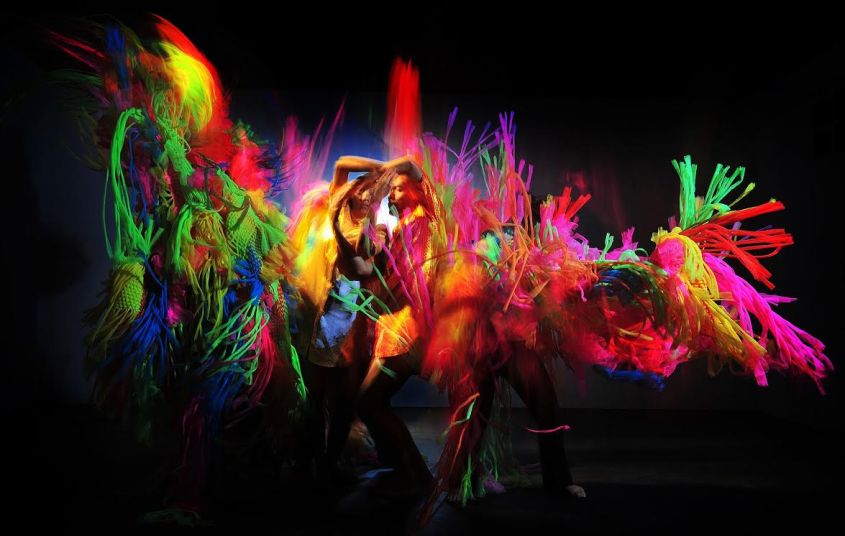Confronting and experimental
By Leeor Adar
As part of AsiaTopa, renowned Thai choreographer Pichet Klunchun presents Australian audiences with what he calls a dance representing a state of “limbo”.

Based on the teachings of nineteenth-century Buddhist monk Luang Pu Dulaya, “Dun” Atulo, the meaning of “limbo”, is unpacked as all creatures sharing the same “citta”, a form of consciousness. Klunchun and his performers create a collective, and often arduous dance that signifies unpredictable shifts in power, whether within the individual or in wider society.
We really don’t get what we bargain for as an audience. Admittedly, a great number of those attending the performance are unfamiliar with Klunchun’s work, the creation of a revered and formidable dancer who contemporises traditional Thai dance. At first masked and colourful dancers parade about the stage and we think: of course, traditional. Moments later, a lone figure emerges in white, movements so precise and slow that they utterly contradict the colour and wildness of the more traditional movements. The lone figure moves in a manner that recalls Japan’s own Butoh, but Klunchun is about to take us on an entirely different journey as we soon discover.
Filed onto the performance space of the State Theatre, a stage is created upon a stage. A curved and sloping giant circle, which recalls a skateboard-rink lit in a brilliant yellow is our focus. The lone figure soon climbs onto this rink, only to be followed by others, also in white, also sharing in the lone figure’s limbo. The collective movements of the dancers is hauntingly soothing at first, and the monotony of the action hypnotises. Sound designer Hiroshi Iguchi masterfully creates a soundtrack that matches the dancers in their energy – a blend of modern, ardent and repetitive sound blasts through the audience.
As the pace quickens, we, like the dancers are simply exhausted. There are noticeable shifts in the dynamic of the dancers, representing desire for closeness, conflict and desperation. Our original lone figure continues to wander in the abyss, and the other dancers leap from the limbo rink into a celebration of contemporary dance with new additions. This is a joyous moment, but the lone figure continues to wander, and Klunchun’s world eclipses on this figure.
As an audience we did not know when to clap, or what to do. Klunchun succeeded in presenting an entirely new mode of dance theatre for this audience, but it was ultimately draining and unsettling. Unfortunately the result of this is alienation; perhaps that is what Klunchun intended in the hopes of showing our own tendency to “shun the unknown and change”, falling into a “vicious cycle” of lost opportunities in relating.
Dancing With Death was performed from the 2-4 March at the Arts Centre, Melbourne. You can learn more about Klunchun’s work here: http://pkdancecompany.com/